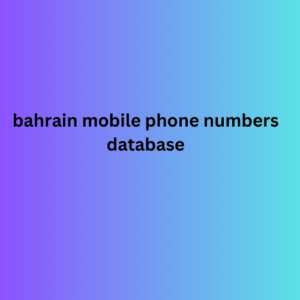Once you have your tech infrastructure in place, map out the new workflows you plan to automate. Consider the entire customer journey, from initial engagement to conversion and beyond.Choosing marketing automation software for your agency is a strategic task. It should streamline your internal workflows while maximizing the value you provide to clients.
To help you save time, we've bahrain mobile phone numbers database selected 10 marketing automation tools designed for the unique needs of agencies. These tools cover a range of use cases. Many also offer agency-specific plans with perks like partner programs and priority support.
Want to learn more about marketing automation for agencies? Here are the top features and tools.
Marketing automation for agencies: 3 key features
Here’s what you should look for when choosing a marketing automation tool for your agency.
1. Multi-account management
Multi-account management functionality lets you set up multiple sub-accounts or workspaces within a single interface. So instead of constantly logging in and out when switching between clients, you can simply navigate to a different tab or account.

A centralized account dashboard: a dashboard where agencies can view and manage all client accounts at a glance. You should be able to easily switch between accounts.
User permissions and roles: granular control over user access and permissions. This allows you to assign roles and restrict access to specific clients or features.
Advanced security: robust security measures to safeguard sensitive client data.
2. White label
Your marketing automation platform should allow you to customize the deliverables with your client’s logo, colors, and branding elements. For instance, if you manage email marketing campaigns for your clients, you should be able to set up custom domain names and branded email templates.
Depending on the use case, you should seek out the following features:
Customizable branding options: the ability to upload the agency’s branded assets and customize the interface and deliverables.
White label domain: custom domains for client-facing portals.
White label reporting: customizable, client-ready reports that can be branded with the agency's logo and colors.
Client-specific branding: the flexibility to apply different branding settings to each client account.
3. Integration
Your tech stack isn’t limited to a single automation tool. You may use different tools to manage social media content, streamline omnichannel customer experiences, and handle reporting. However, all these solutions must be compatible with each other.
To prevent data silos, you need to make information flow seamlessly.
